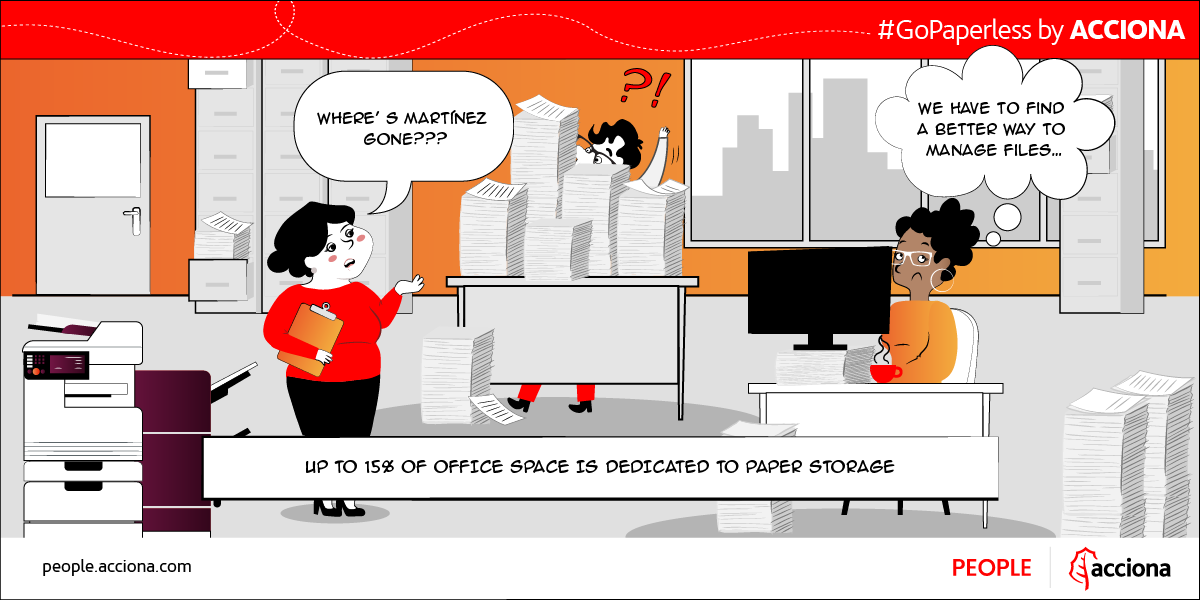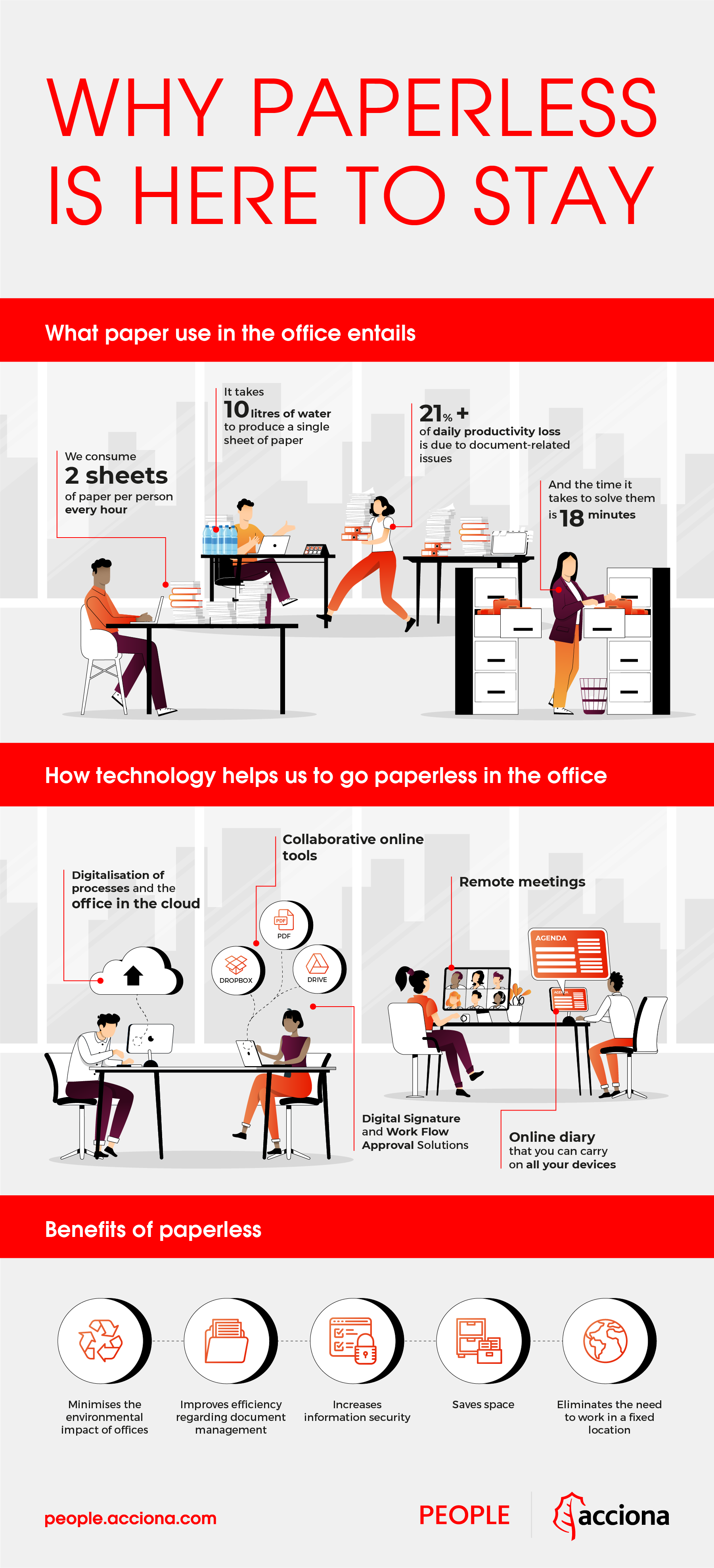The digitisation of processes has taught us that reducing paper consumption and archiving is now easier than ever:
-Paperless offices use digital media for internal and external correspondence.
-Notes can be sent by e-mail or via a job portal.
-Businesses can also communicate via mobile devices and cloud-based software or internal platforms.
-Employees can also bring devices to meetings to take notes digitally.
-When signatures are required, many companies opt for fillable PDF files and electronic signatures.
Advantages of paper reduction
There are compelling reasons to migrate from paper to digital. It’s estimated that the time it takes to find an archived piece of paper is around 18 minutes, and that more than 21% of daily productivity loss is due to problems related to finding documents. This is why companies that opt for paperless systems increase their agility and flexibility.
Moreover, in any business process that requires extensive use of paper, the weakest link is always the paper itself. Errors occur more often when information is in this format —papers get lost, there can be errors in transcription and even forgeries. The truth is that the paperless model has many advantages to consider:
* Minimise the environmental impact of offices: reducing paper consumption in processes is a strategy that aligns with Sustainable Development Goals.

